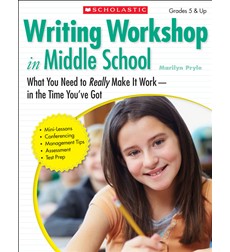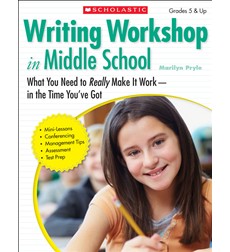Help Writers Cultivate Themes
As they search for meaning, how can we help young writers discover and cultivate themes in their work?
Once a student has chosen a topic, and brainstormed that topic, either by listing, mapping, or freewriting, I always start to look for the theme. It does not (and often should not) have to be spelled out. Nor does it have to be clearly formed in the early stages of the essay, since a theme often reveals itself to a writer as he writes. The essay should, however, have a heartbeat.
Without a glimmer of a theme, the piece has no meaning, no reason to exist, no justification to be read. The theme can change, deepen or shift as the drafts evolve. It can start out as only a feeling, but the writer must have some sense of it, and must be willing to let it ripen.
If students do not learn to write with the intention of having a theme, their pieces are dry bones, no matter how well-crafted the description.
Probing for theme
Any piece of writing can have a theme. It is up to the writer to discover it and convey it to the reader. Any topic a student chooses to write about comes from a multitude of possible topics in her consciousness—it obviously has some meaning for her. I may be familiar with the topic, but I cannot assign it significance; only the writer of that particular piece can. My job is to ask her questions that will lead her to the deeper meaning of the piece.

Thinking in terms of theme may be difficult for students. Sure, they read short stories, novels and plays and discuss themes such as growing up, survival, betrayal, and forgiveness, but to them, it can seem almost absurd to apply these ideas to their own lives. Even if they know an event is meaningful, they don’t know how to, or don’t want to, verbalize why. As a teacher, I cannot simply tell a student, “Take a few minutes and brainstorm some themes for this piece.”
Theme is something that already exists from the beginning, in the details, in the dialogue, in a comment that the student slipped in without plumbing the full meaning of it. My job, then, is to detect these rough nuggets when I see them, and to make a mental note (or even a written note) to return to them when the time is right in the progression of the piece. Then I can say to the writer, “Look what you wrote here. What does that mean? What is this really about?”
We help them dig deeper
But even that is not enough. Never will a student answer, “Oh! That sentence reflects my fear of change. This essay is really about me coming of age!” Usually they play dumb, or even become reluctant or cranky. I have to keep pushing.
Sometimes I say to students who are in total denial, “Look, you wrote this piece. You remembered this event. Out of all the thousands or even millions of memories in your head, you chose this one. You chose all the details; you chose everything about it. It means something to you. It stands out for you. Your job as a writer is to figure out why.” I want not only to get the student thinking, but also to suggest that she, as the writer, controls the material.

I try not to dictate any themes for them, but instead suggest themes to which the piece seems to lend itself. One easy way of finding a theme, I tell students, is to ask yourself what you learned from the experience. The student can simply begin a sentence with a phrase like, “I learned,” “I realized,” or “I knew then.” With fiction, the writer must ask this question of her main character.
Theme across genres
Theme need not only apply to storytelling; a topic’s importance and relevance can be communicated in other genres as well. With any genre, the reader asks the question: “Why should I care?” The answer to this question reveals the essay’s theme.
In a persuasive essay, it’s the reason readers should care about the writer’s position, or how that position enriches their lives or life in general. In a compare and contrast essay, it’s the meaning in the differences, or even the pleasure, the mindfulness, in noticing and analyzing the differences. Maybe the writer expresses a preference for one subject over the other in the compare/contrast piece; the essay then becomes persuasive and meaning can be found there. A book review or short story analysis that evaluates the story’s themes and their significance illuminates an essay’s own themes.
All essays can have that deeper meaning that connects the reader to the topic and its broader relevance to life in general. When they do, they have a theme.
____



































